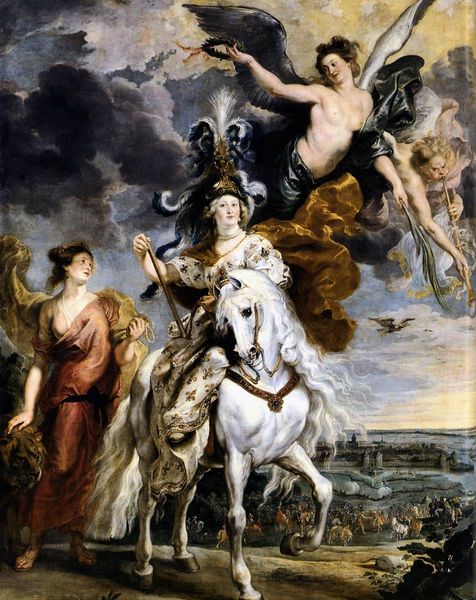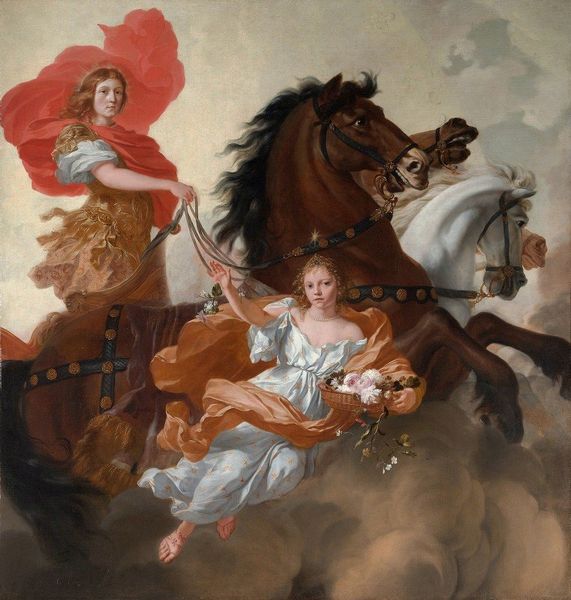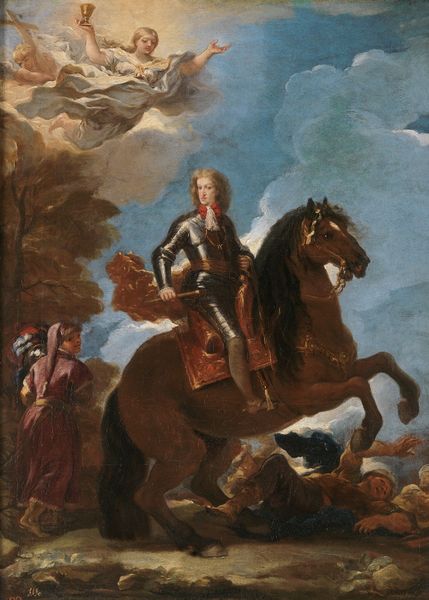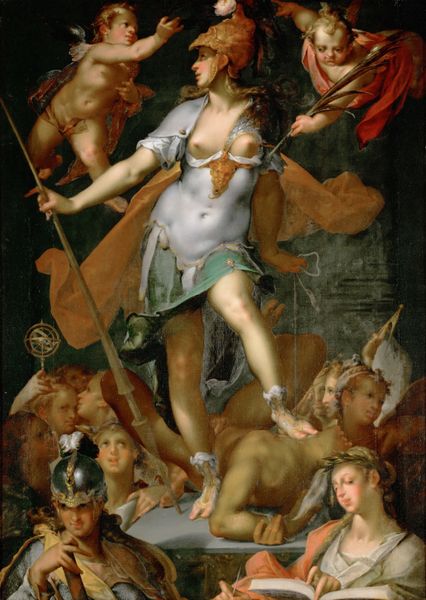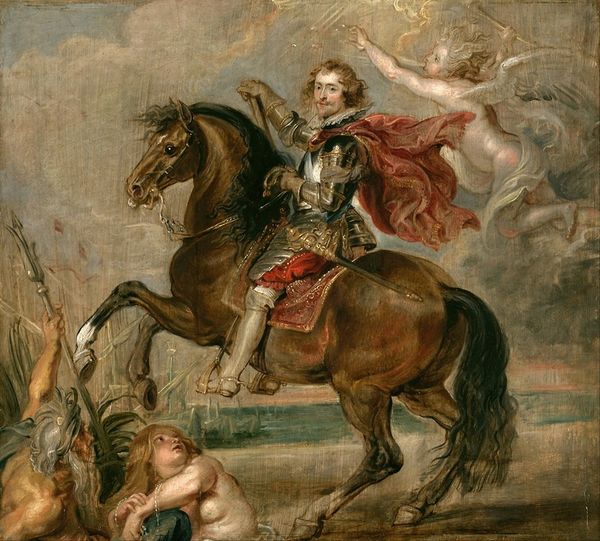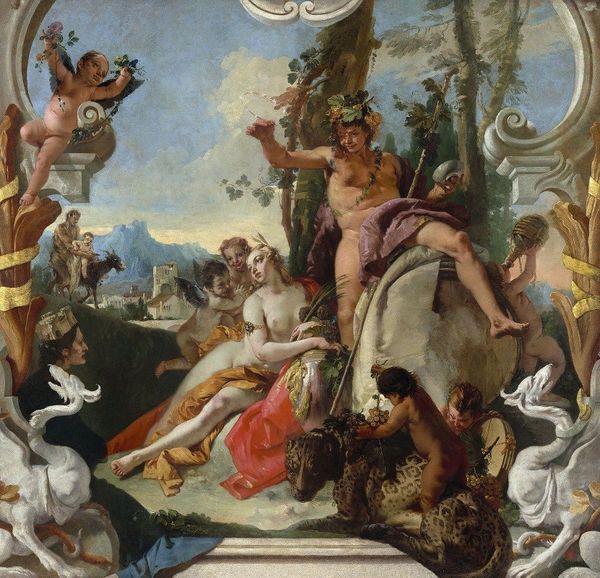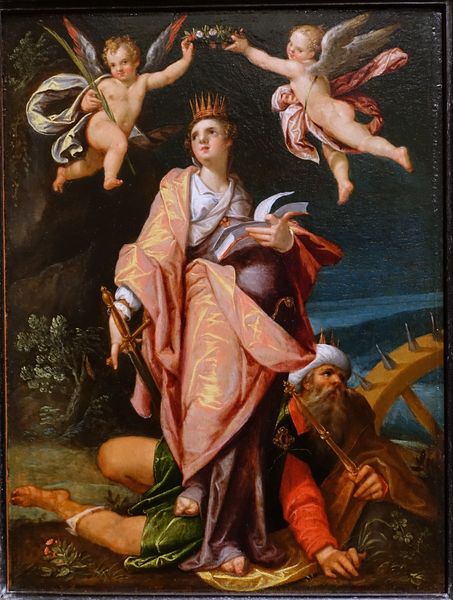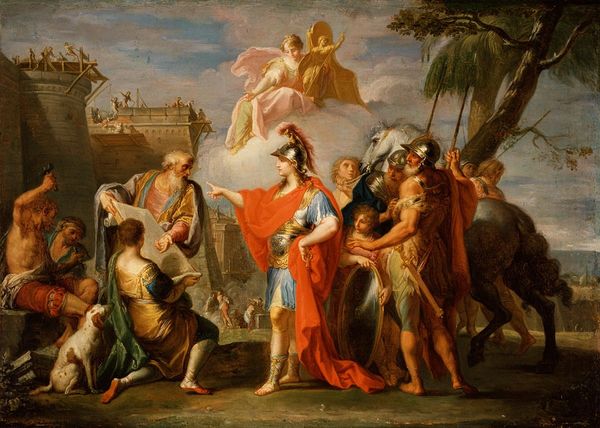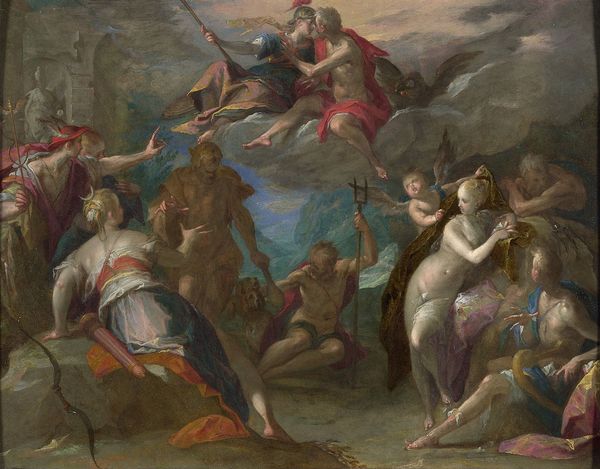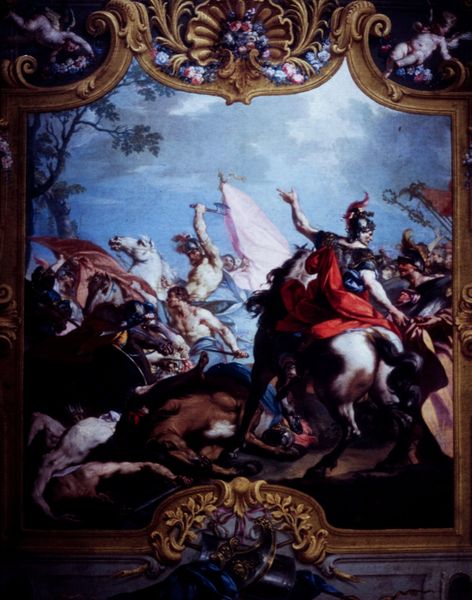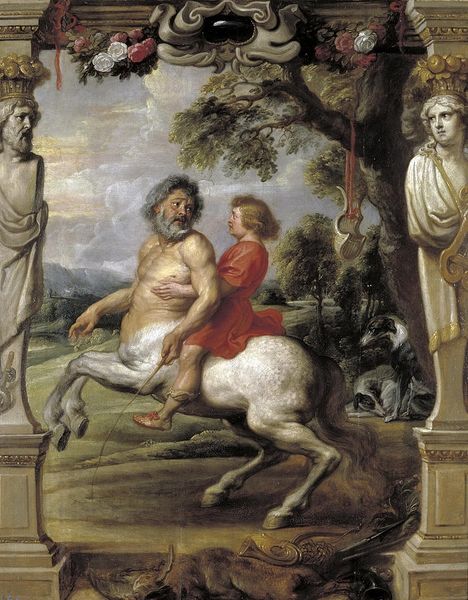
painting, oil-paint
#
portrait
#
allegory
#
baroque
#
painting
#
oil-paint
#
oil painting
#
history-painting
#
academic-art
#
portrait art
Copyright: Public domain
Curator: Luca Giordano’s oil on canvas portrait of Maria Anna of Neuburg from 1694 presents a fascinating case study in power, representation, and allegory. Editor: The immediate impression is…grand! A queen, mounted on a striking white horse, bathed in allegorical imagery – a real display of opulent Baroque sensibility. Curator: Absolutely. It's impossible to separate this from its historical context. Maria Anna, as Queen consort of Spain, was a figure embroiled in political intrigue. This painting attempts to solidify her position, but the very need for such a grand representation also reveals vulnerabilities. Editor: I agree; it speaks to the fabrication of identity through courtly portraiture. Thinking about the production – the source of the pigments for that rich red gown, the canvas itself – it points to global trade networks and exploitative labor practices of the time. Who wove that fabric, mined the pigment, stretched the canvas? Curator: Indeed. And how does Giordano, an Italian painter, become the conduit for projecting Spanish imperial power? His technique, the very brushstrokes, become a tool in constructing her image as a divinely appointed ruler. We have to consider how her gender further complicates the power dynamics displayed here. Editor: That vibrant color has another implication for me: access and excess! Imagine the cost of that robe, in labor, and raw materials – and what did that availability represent, in that time? The materiality emphasizes inequality, a deliberate, potent show. Curator: Absolutely. Notice the allegorical figures, offering flowers and accompanying her—the idealised representation, versus the historical reality, underscores the work the painting is doing. And, one should not forget the influence she might wield given how her position intersected with ideas of power. Editor: The painting, from a production point of view, also reflects a deliberate orchestration of skilled labor, each step contributing to an image meant to not only impress, but overwhelm. Consider the guild system, apprenticeships, the hierarchy embedded within the very act of painting itself. Curator: Exactly, this goes well beyond just image production! We have the confluence of artistic skill and social power used to reinforce an uneven reality for all. The careful arrangement reflects what they considered necessary. Editor: Thinking through labor and access really makes the picture so much deeper and complex. I walk away considering art itself and what we choose to produce. Curator: Understanding art is not simply aesthetics but a potent cultural marker.
Comments
No comments
Be the first to comment and join the conversation on the ultimate creative platform.
